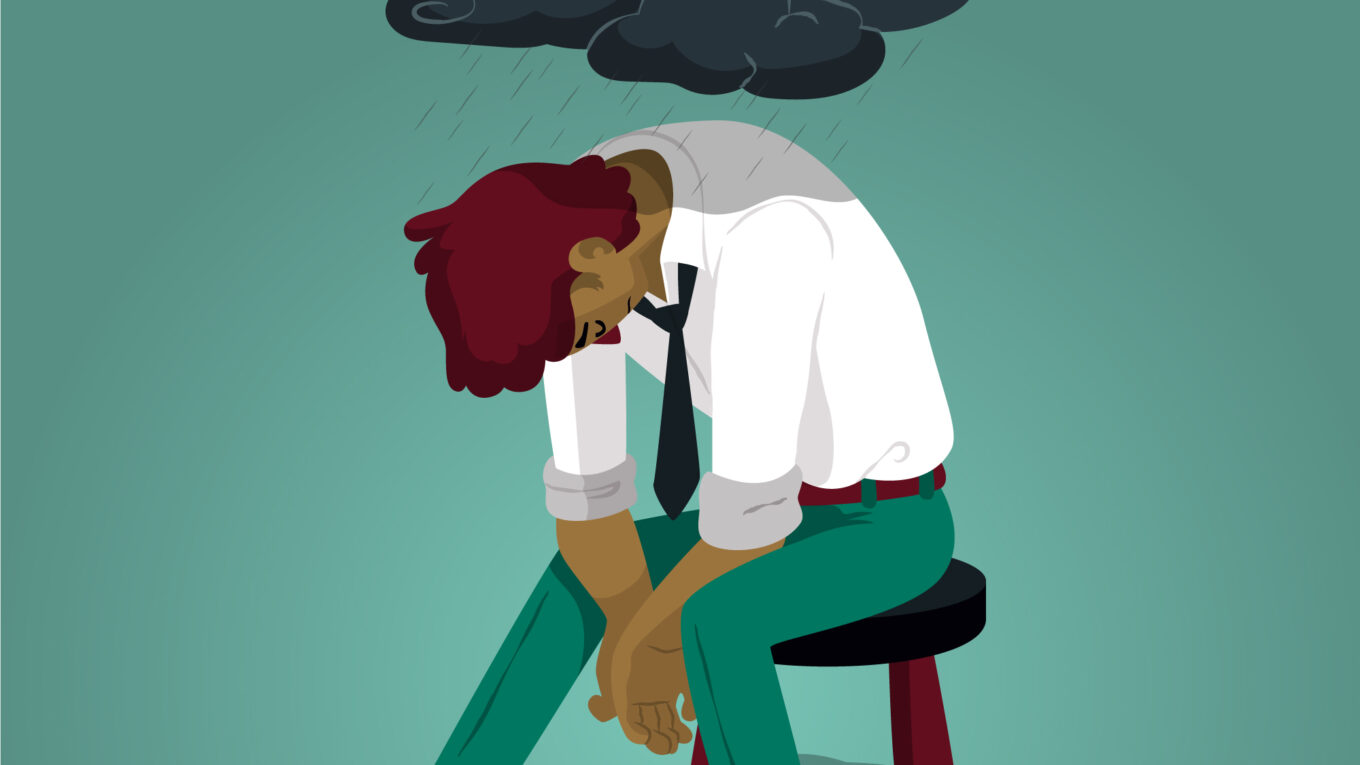Decoding the Complex Relationship Between Depression and Suicide: Insights, Risks, and Treatment Strategies
Decoding the Complex Relationship Between Depression and Suicide: Insights, Risks, and Treatment Strategies
Read Disclaimer
Discover risk factors, treatment modalities, and creative methods as you investigate the complex relationship between depression and suicide. Discover how to spot warning indicators and where to find services for prevention.
Introduction

Millions of people worldwide suffer from depression, a complex mental health illness that also significantly increases the risk of suicide thoughts and actions. Developing successful preventative and therapeutic measures requires an understanding of the complex relationship between depression and suicide risk. This piece explores the subtleties of this relationship, looking at the interrelated elements, related hazards, and the changing field of therapies.
Understanding Depression and its Connection to Suicide Risk

Depression is more than just a passing sensation of melancholy; it is a spectrum of symptoms that includes poor mood that lasts for a long time, pleasure or interest loss, changes in eating or sleep patterns, exhaustion, and guilt or worthlessness thoughts. Suicidal thoughts are not experienced by everyone with depression, although depression greatly increases the risk of suicide.
Suicidal thoughts and depression are caused by a complex interaction of biological, psychological, and social variables. Depression symptoms are associated with neurochemical imbalances including serotonin, dopamine, and norepinephrine; however, other important causes include social isolation, trauma, chronic stress, and heredity.
Suicide Risk Factors in Depressive Disorders
Suicidal ideation, attempts, and completion are more common among those who are depressed. Numerous elements increase this risk:
1. Depression Severity: Suicide risk increases with the severity of depressed symptoms.
2. Co-occurring Disorders: Depression exacerbated by substance addiction, anxiety disorders, and personality disorders increases the risk of suicide.
3. Prior Attempts: Suicide attempts increase the probability of new attempts.
4. Social Support and Isolation: Vulnerability is increased in the absence of robust social networks or support systems.
5. Access to Means: The risk of suicide increases when lethal means, such guns or drugs, are easily accessible.
Treatment Approaches
Improving depression treatment is essential to lowering the risk of suicide. A variety of therapies customized to each patient’s needs are included in treatment strategies:
1. Psychotherapy: Resolving negative thinking patterns and improving coping mechanisms are successful goals of dialectical behavior therapy (DBT), cognitive-behavioral therapy (CBT), and interpersonal therapy (IPT).
2. Medication: To treat symptoms, doctors frequently prescribe antidepressants such SNRIs (selective serotonin reuptake inhibitors) and SSRIs (serotonin-norepinephrine reuptake inhibitors).
3. Supportive Interventions: Crucial help can be obtained through crisis hotlines, peer counseling, and support groups.
Early detection and intervention are also very important. Suicide among depressed people can be prevented in large part by encouraging open communication, conducting routine mental health screenings, and lowering the stigma associated with getting treatment.
Emerging Treatment Frontiers
Novel therapies are being made possible by developments in the fields of neurobiology and psychiatry. For example, ketamine and esketamine have demonstrated potential in quickly lowering depressed symptoms, particularly in patients who are not responding to medication. Furthermore, alternative treatments that have shown effectiveness in certain circumstances include vagus nerve stimulation (VNS) and transcranial magnetic stimulation (TMS).
Conclusion
In conclusion, a comprehensive strategy incorporating biological, psychological, and social aspects is necessary due to the complex interplay between depression and suicide risk. Because of the intricate interactions between neurobiological abnormalities, life events, and environmental factors, depression dramatically increases the risk of suicide thinking and conduct.
A multimodal strategy that takes into account each patient’s unique requirements is necessary for effective treatment, and this includes supportive measures, medication, and psychotherapy. But it’s important to understand that there isn’t a one-size-fits-all approach, which emphasizes the need for further research into cutting-edge cures and preventative measures.
For those suffering from depression, early detection, intervention, and a decrease in the stigma associated with mental health treatment are essential. It will take sustained efforts at destigmatizing, raising awareness, and educating people before we can create a culture in which getting assistance for mental health issues is accepted and encouraged.
In order to address the connection between depression and suicide, mental health experts, legislators, communities, and the individuals themselves must work together. By adopting a holistic strategy that takes into account the short- and long-term components of mental health treatment, we may work toward a future in which depression is successfully treated and the likelihood of suicide is drastically decreased.
FAQs about Relationship Between Depression and Suicide with Answers
1. What is the link between depression and suicide?
Depression significantly increases the risk of suicidal ideation and behavior due to a combination of biological, psychological, and social factors.
2. What are the risk factors associated with depression and suicide?
Factors include severity of depression, co-occurring disorders, previous suicide attempts, social support, and access to means.
3. How is depression treated in relation to suicide risk?
Treatment involves psychotherapy, medication, and supportive interventions tailored to individual needs.
4. Are there innovative treatments for depression and suicide prevention?
Emerging treatments like ketamine, TMS, and VNS show promise, especially in treatment-resistant cases.
5. How can individuals help prevent suicide among those with depression?
Early identification, fostering open communication, reducing stigma, and providing support are key.
6. What role does social support play in preventing suicide among depressed individuals?
Strong social connections and support networks can significantly reduce vulnerability to suicide.
7. Can depression be managed without medication?
Psychotherapy, lifestyle changes, and supportive interventions can be effective in managing depression for some individuals.
8. Are there specific warning signs to watch for in someone with depression?
Changes in behavior, talking about suicide, withdrawing from social activities, and extreme mood swings can be warning signs.
9. How can communities contribute to suicide prevention?
Communities can raise awareness, provide access to mental health resources, and promote supportive environments.
10. Is there a relationship between age and suicide risk in depression?
Certain age groups, such as adolescents and the elderly, may have higher suicide risk when experiencing depression.
11. What role does access to means play in suicide risk?
Easy access to lethal means, like firearms or medications, can increase the likelihood of completing suicide attempts.
12. Can depression in one family member affect the risk of suicide in others?
Yes, a family history of depression or suicide can contribute to an increased risk among relatives.
13. How can schools support students dealing with depression and suicidal thoughts?
Schools can provide counseling services, mental health education, and create safe spaces for open discussions.
14. Can depression occur alongside other mental health conditions?
Yes, depression often coexists with anxiety disorders, substance abuse, or personality disorders, amplifying suicide risk.
15. Are there resources available for immediate help in crisis situations?
Crisis hotlines, mental health emergency services, and online support groups offer immediate assistance and guidance.

Your point of view caught my eye and was very interesting. Thanks. I have a question for you.
Can you be more specific about the content of your article? After reading it, I still have some doubts. Hope you can help me. https://www.binance.com/hu/register?ref=FIHEGIZ8
Can you be more specific about the content of your article? After reading it, I still have some doubts. Hope you can help me.
Can you be more specific about the content of your article? After reading it, I still have some doubts. Hope you can help me.
I don’t think the title of your article matches the content lol. Just kidding, mainly because I had some doubts after reading the article.
Your article helped me a lot, is there any more related content? Thanks!
Your article helped me a lot, is there any more related content? Thanks!
Thanks for sharing. I read many of your blog posts, cool, your blog is very good.
Can you be more specific about the content of your article? After reading it, I still have some doubts. Hope you can help me.
Your article helped me a lot, is there any more related content? Thanks!
vhq cocaine in prague weed in prague
prague drugs buy coke in telegram
buy xtc prague weed in prague
weed in prague columbian cocain in prague
Your article helped me a lot, is there any more related content? Thanks!
Thank you, your article surprised me, there is such an excellent point of view. Thank you for sharing, I learned a lot.
You’ll need to utilize your own shipping labels or alternative services like Pirate Ship to handle shipping logistics efficiently. As of February 24, 2025, you can’t create or purchase prepaid shipping labels directly through Facebook for new listings. When listing your item, provide clear, high-quality images and an accurate description. This ensures you can effectively reach a larger audience while maintaining a secure selling environment. This integration allows you to benefit from discounted shipping rates, enhancing your profit margins.
E-wallets tend to offer the fastest withdrawal times, often processing within 24 hours, while bank transfers and card withdrawals may take several business days. It’s important to note that the availability of online gaming options may vary depending on the local regulations and the specific services offered by each casino location. It is Australia’s second-largest casino, offering a vast array of gaming options, including poker, blackjack, and roulette, along with electronic gaming machines.
Another random day during the week the casino offers $1,000 five different times in the Cash Draw. With its strategic locations in Sydney, Brisbane, and the Gold Coast, The Star Casino offers a unique blend of gaming, dining, and entertainment options that cater to a wide range of preferences and tastes. These offers are designed to cater to both new and regular patrons, encompassing a wide range of rewards from gaming credits to luxury experiences. The casino offers traditional baccarat along with popular variations that can include side bets or slightly altered rules to add an extra layer of excitement to the game. The Star Casino offers a diverse range of gaming options, catering to both seasoned gamblers and newcomers alike.
References:
https://blackcoin.co/ufo9-casino-your-place-to-play-your-way/
online american casinos that accept paypal
References:
http://www.grapvocar.site/bbs/board.php?bo_table=free&wr_id=221
online slots uk paypal
References:
http://maxes.co.kr/bbs/board.php?bo_table=free&wr_id=2751053
casino mit paypal
References:
https://jobsindatacenter.com/employer/australian-casinos-accepting-paypal-payments-in-2025-2025-the-best-paypal-casinos/
online casino that accepts paypal
References:
https://didiaupdates.com/employer/our-favorite-paypal-casinos-2025-ranking-update/
casino online uk paypal
References:
https://www.findinall.com/profile/kellyanaya4114
casino con paypal
References:
https://mixclassified.com/user/profile/1040827